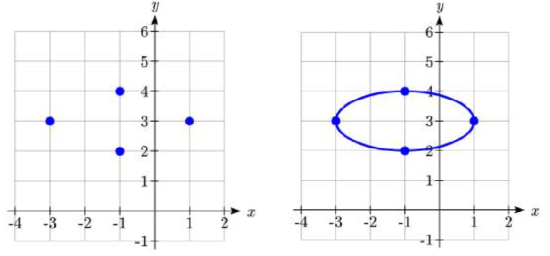3.2: Circles
( \newcommand{\kernel}{\mathrm{null}\,}\)
Circles
Recall from geometry that the definition of a circle is the set of points that are equidistant from a fixed point.
If we wanted to find an equation to represent a circle with a radius of
Squaring both sides of the equation gives us the standard equation for a circle.
Definition: The Standard Equation for a Circle
|
The equation of a circle centered at the point ( Notice that a circle does not pass the vertical line test - it is not a function and it is not possible to write |
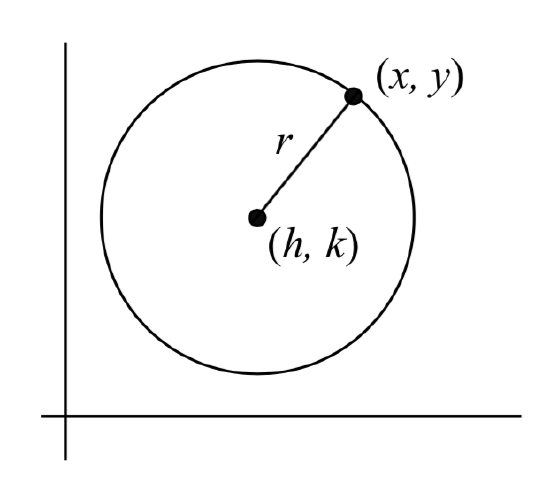 |
Obtain the equation of a circle given a graph
Example
Write an equation for the circle graphed here.
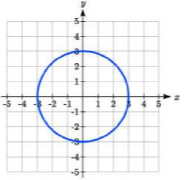
Solution
This circle is centered at the origin, the point (0, 0). By measuring horizontally or vertically from the center out to the circle, we can see the radius is 3. Using this information in our formula gives:
simplified, this gives
Obtain the equation of a circle given a description.
Example
Write an equation for a circle centered at the point (-3, 2) with radius 4.
Solution
Using the equation from above,
simplified, this gives
Example
Write an equation for a circle with center (−2,3) and radius 5.
Solution.
Here,
Exercise
Write an equation for a circle centered at (4, -2) with radius 6.
- Answer
-
Graph a circle given an equation.
Example
Graph
Solution
From the standard form of a circle we have that
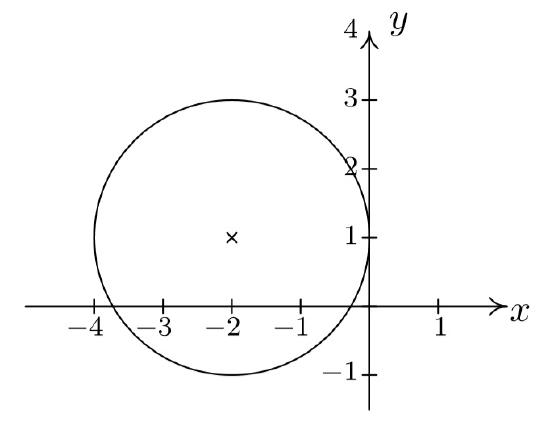
Graph a circle given an equation that is not in standard form.
If we were to expand the equation in the previous example and gather up like terms, instead of the easily recognizable
To Write the Equation of a Circle in Standard Form
- Group the same variables together on one side of the equation and position the constant on the other side.
- Complete the square on each variable.
- Divide both sides by the coefficient of the squares. (For circles, the coefficients will be the same.)
Example
Complete the square to find the center and radius of
Solution
From the standard form of the equation for a circle, we identify
It is possible to obtain equations like
Ellipses
An ellipse is an oval-shaped circle. In this section we will simplistically regard an ellipse as a squashed circle with a horizontal radius
Definition: EQUATION OF AN ELLIPSE CENTERED AT
|
The standard form for the equation of an ellipse centered at where The four endpoints of the radii are called vertices. The horizontal diameter or horizontal axis is |
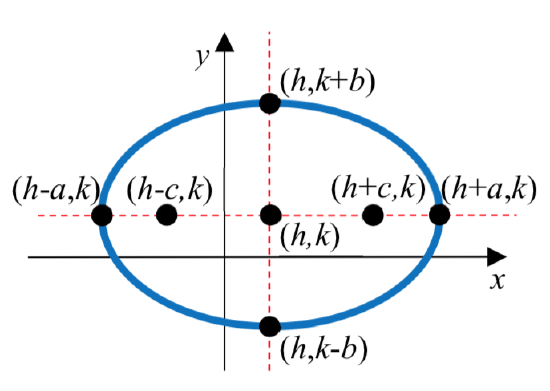 |
Obtain the equation of an ellipse given a graph
Example
Find the standard form of the equation for the ellipse graphed here.
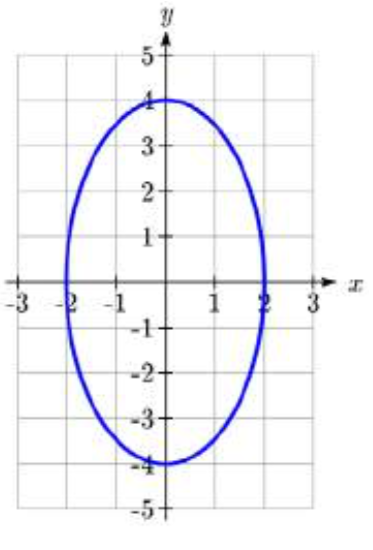
Solution
The center is at (0,0). From the graph we can see the horizontal radius is
The equation will be
Obtain the equation of an ellipse given a description.
Example
Find the standard form of the equation for an ellipse centered at (0,0) with horizontal radius of 16 and vertical radius of 8.
Solution
Since the center is at (0,0) , the horizontal radius is
Exercise
Find the standard form of the equation for an ellipse centered at the origin with horizontal radius of 10 and vertical radius of 3.
- Answer
-
Graph an ellipse given an equation.
Example
Put the equation of the ellipse
Solution
The standard equation has a 1 on the right side, so this equation can be put in standard form by dividing by 9:
The horizontal radius is
To sketch the graph we locate the center and plot the location of the radii. Then we sketch the ellipse.
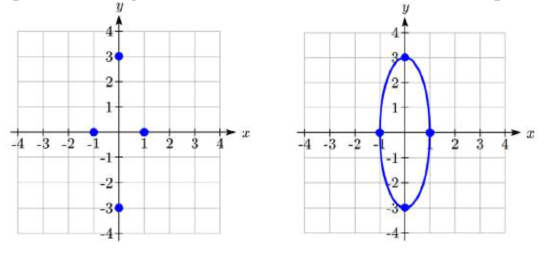
Exercise
Find the center and horizontal and vertical radii for the ellipse
- Answer
-
Center (4, -2) with
Vertices at (4
Graph an ellipse given an equation that is not in standard form.
Sometimes we are given the equation of an ellipse that is not in standard form. In this situation, completing the squre must be done twice to obtain the equation in standard form.
Example
Put the equation of the ellipse
Solution
To rewrite this in standard form, we will need to complete the square, twice.
Looking at the
Repeating the same approach with the
Now we want to be able to write
For the coefficient of
To allow this factoring, we can add 36 to both sides of the equation.
Dividing by 4 gives the standard form of the equation for the ellipse
The center is at (
To sketch the graph we locate the center and then locate the endpoints of the radii. Then we sketch the ellipse.
